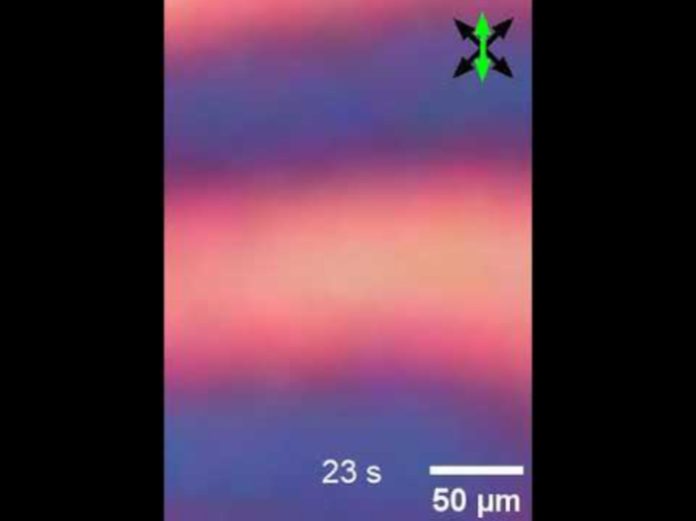
Imagine a clock that never needs batteries, one that ticks forever on its own.
That’s close to what physicists at the University of Colorado Boulder have created—a new kind of time crystal made from liquid crystals, the same materials found in phone and TV screens.
Unlike previous versions, this time crystal can actually be seen directly under a microscope, and sometimes even with the naked eye.
The research, led by graduate student Hanqing Zhao and physics professor Ivan Smalyukh, was published in Nature Materials.
Their experiment has produced one of the clearest demonstrations yet of a strange and still mysterious phase of matter called a time crystal.
The idea of time crystals was first proposed in 2012 by Nobel Prize–winning physicist Frank Wilczek.
In ordinary crystals such as diamonds or table salt, atoms line up in repeating patterns in space.
Wilczek wondered: what if matter could form repeating patterns in time instead? In other words, what if particles or structures could stay in constant motion, forever cycling through a sequence like a looping animation?
Wilczek’s original design proved impossible, but in the years since, scientists have come close by creating systems that exhibit repetitive, long-lasting changes. In 2021, for example, researchers used Google’s Sycamore quantum computer to build a time crystal out of interacting atoms that oscillated under laser pulses.
The Boulder team wanted to make a time crystal that was not only stable but also visible. Their material of choice was liquid crystals—rod-shaped molecules that are neither fully liquid nor fully solid. When sandwiched between glass plates coated with dye molecules and illuminated with certain kinds of light, the liquid crystals started to twist and swirl. These motions formed patterns that repeated over time, continuing for hours without stopping.
Under a microscope, the samples looked like brightly colored tiger stripes shifting and reorganizing in endless cycles. The researchers compared the behavior to dancers at a ball: pairs break apart, spin across the room, then reconnect, only to start the process again. Even when the scientists raised or lowered the temperature, the patterns kept repeating, showing that the time crystal was surprisingly robust.
“All you do is shine a light, and this whole world of time crystals emerges,” Smalyukh said.
The underlying mechanism comes from how the dye molecules interact with the liquid crystals. When the light hits the dye, it forces the rod-shaped molecules into tight bundles. These bundles form kinks—tiny twists that can’t easily be removed. The kinks behave like particles themselves, moving, colliding, and reorganizing in repeating rhythms. Thousands of them interacting together produce the visible time crystal effect.
Beyond the physics, Zhao and Smalyukh believe these materials could open the door to practical uses. One potential application is in anti-counterfeiting technology. Imagine banknotes embedded with time crystals: when you shine a light on them, they reveal unique animated patterns, making forgery nearly impossible. By layering different time crystals, engineers could also create highly complex patterns, offering new ways to store digital information in physical materials.
“We don’t want to put limits on the possibilities,” Smalyukh explained. “There are opportunities to push this technology in many directions, from security to data storage and beyond.”
For now, the visible time crystal is still a laboratory curiosity, but it represents an important leap. It shows that time crystals don’t need to be abstract quantum phenomena confined to supercomputers—they can be made from everyday materials, seen with human eyes, and perhaps one day used in real-world devices.
In Smalyukh’s words, “That’s the beauty of this time crystal. You shine a light, and the whole thing happens.”
Source: University of Colorado at Boulder.



